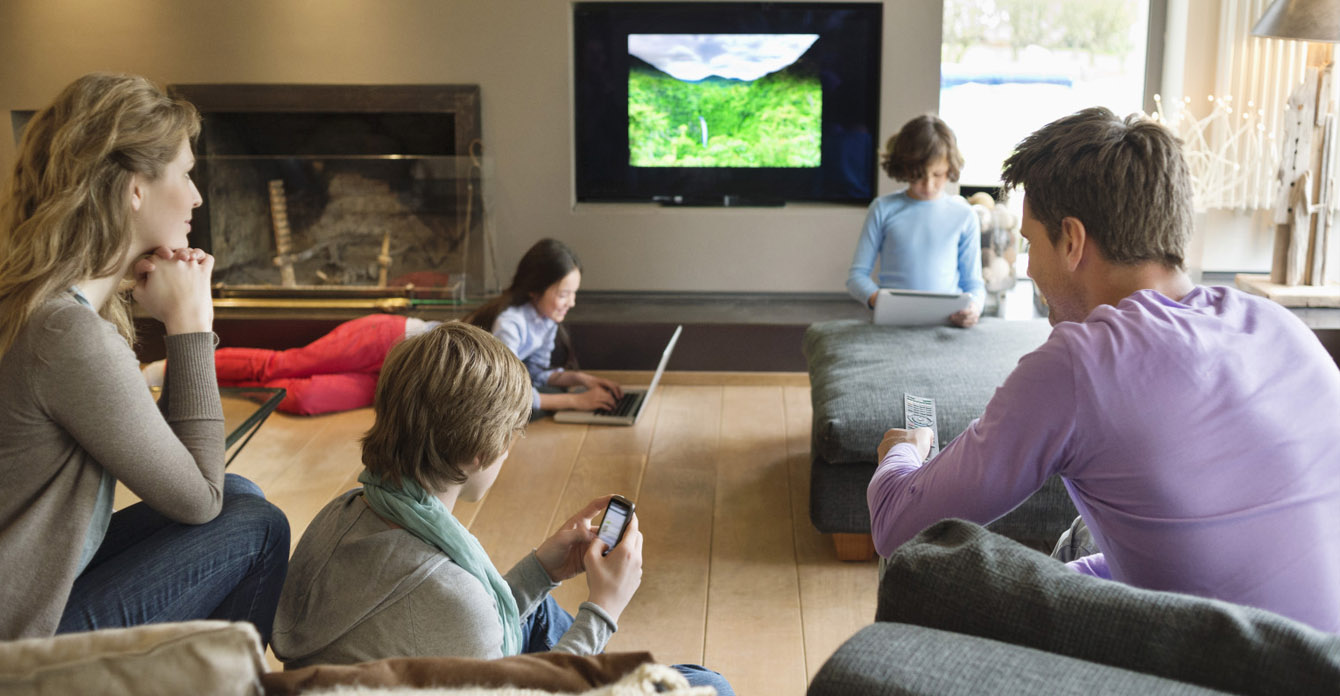At the start of the COVID-19 pandemic, the immediate reaction among many marketers was to pull back on advertising budgets. But as we settle into this new reality – and the US shifts to an at-home lifestyle – the consensus is that media consumption overall is on the rise.
We’re therefore working with clients to adjust messaging and media allocations to remain present for the constituencies that need to hear from them right now—where and how they want to hear from them.
Whether you’re a college reaching out to prospective and current students, a healthcare practice or hospital communicating with patients or a financial institution addressing accountholders, it’s important to show the local market how you’re addressing their specific concerns and contributing to the solution of this crisis.
Let’s break down what you can expect from each channel right now.
Television/Video
Americans are expected to watch as much as 60% more television now that strict coronavirus-related lockdowns and shutdowns are in place in cities around the country, according Nielsen. McKinsey & Company anticipates the largest increase will be in live news (43%), followed by movies and shows (42%). With live sports events cancelled, we have already shifted television buys from networks like ESPN to news sites such as CNN, MSNBC and FoxNews. Daytime audiences are also at an all-time high. CNN’s daytime audience was up 132% versus the same week a year ago, Fox News is up 77% and MSNBC 38%, according to Nielsen. OTT/CTV viewership is also seeing an increase of 42% using streaming services according to the Globalwebindex coronavirus research study.
Radio/Audio
Radio listening behaviors are shifting as well as fewer people are in their cars commuting, and more are now relying on streaming their favorite stations online or turning to services such as Pandora and Spotify. Companies like Nielsen are working to understand how this ecosystem has changed and how consumption has been affected. In their most recent study, 60% of A18+ said they trust radio to give them timely information about the coronavirus and 83% of adults also report spending the same or more time with radio. There has been an 18%+ increase in streaming audio usage across demographics, with Gen Z usage up 57% followed by millennials at 39% according to the Globalwebindex study. In a study done by Nuvoodoo, News & Talk audio listenership is up 21% and podcasts 5%.
Digital
Digital consumption is also at an all-time high with people reading more news online and engaging with social media. McKinsey & Company anticipates a 40% increase in consumers reading news online followed, and a 33% increase in those watching streaming video content and spending time on social media platforms. Social media is playing a huge role right now in helping neighbors and local communities connect with each other, offering live-streams of events and fact-checked content.
Print also has an anticipated increase of about 13%, mostly from those who rely on subscriptions for their news. While print publications have delayed special publication dates and changed themes for current issues to be relevant for the times, there is still an opportunity for brands to run relevant messaging and use advertorials to provide useful information for readers at this time. For example, a higher education client of ours ran an advertorial about navigating virtual online classes.
Out-of-home
Out-of-home is probably the most challenging media to be in right now. There are significantly less people on the roads or using public transportation, and malls and theaters are closed. Current placements will likely stay up longer to make up for the lower impressions and to fill the space of unsold inventory. Any new placements we are putting on hold, shifting out or re-allocating the dollars to other channels.
While we’re certainly in unchartered media territory right now, all indicators point to marketers staying the course with their buys and adjusting their messaging. Austin Williams will continue to navigate these new waters and pivot with the changing landscape so our clients can remain visible and relevant for consumers.










